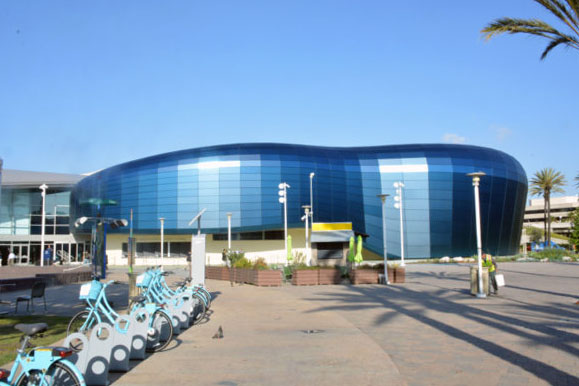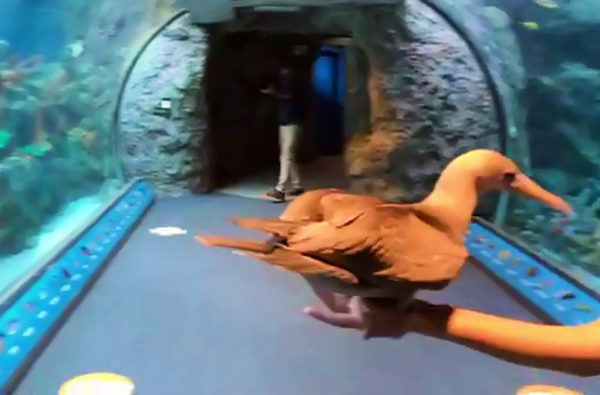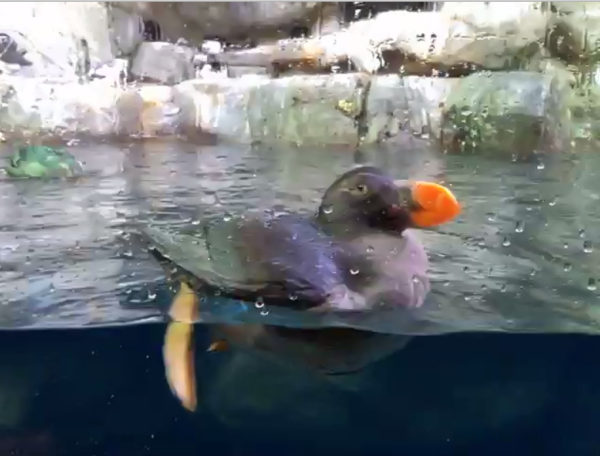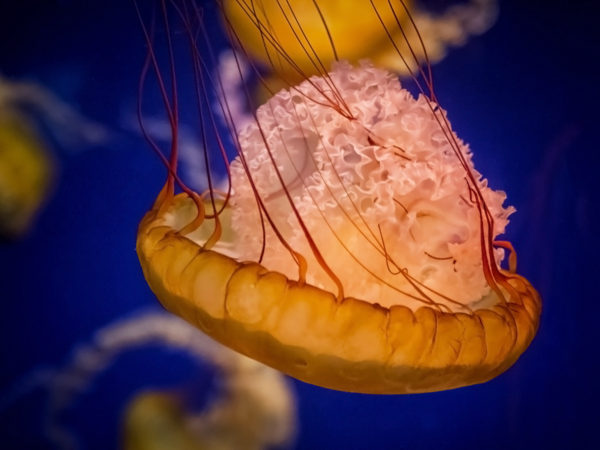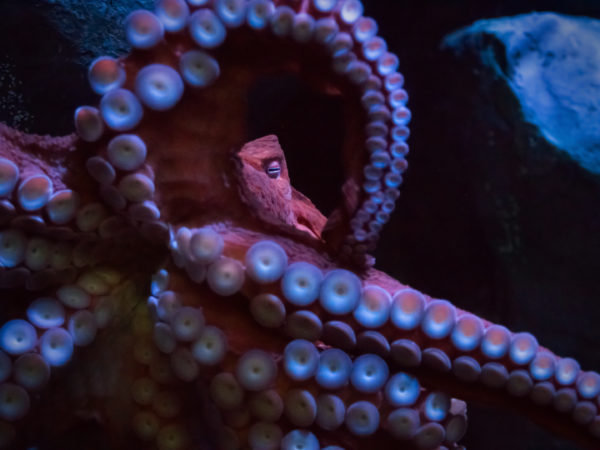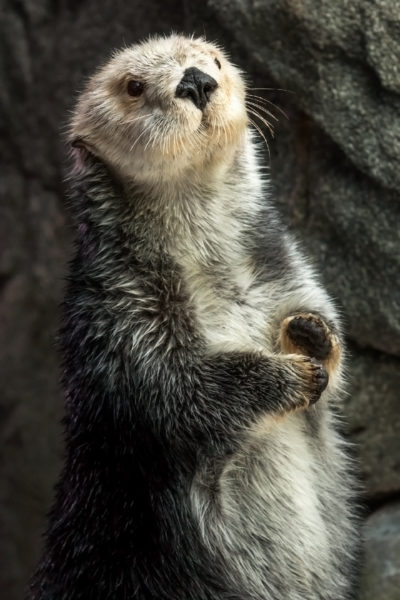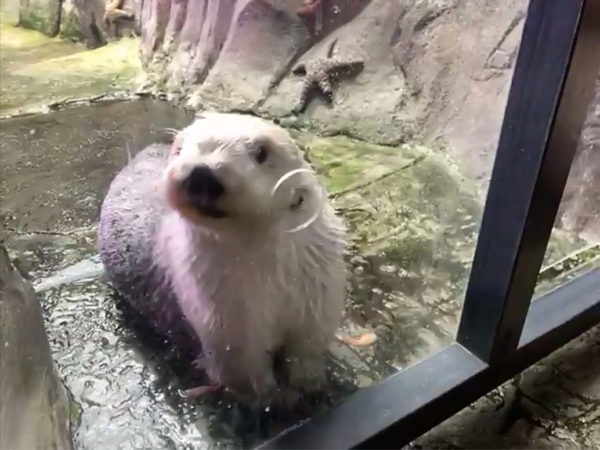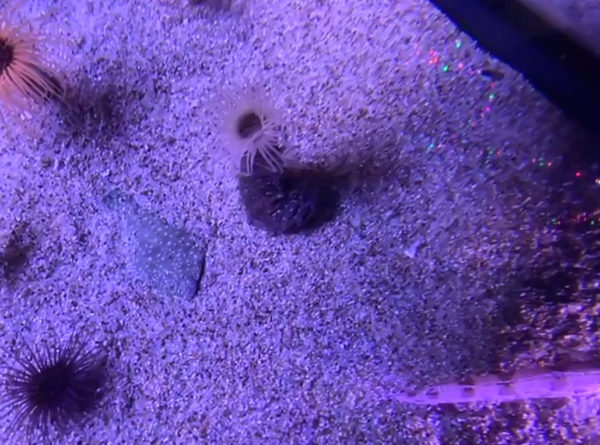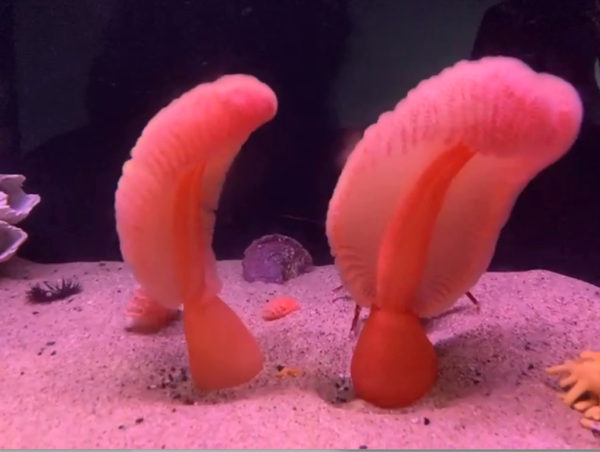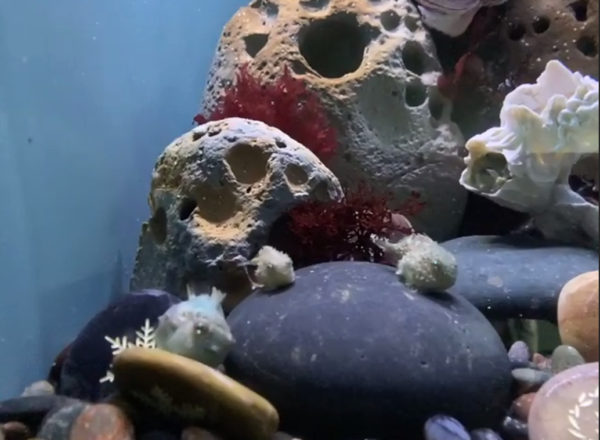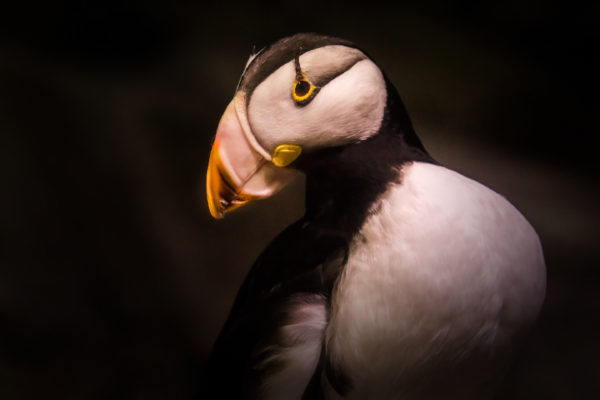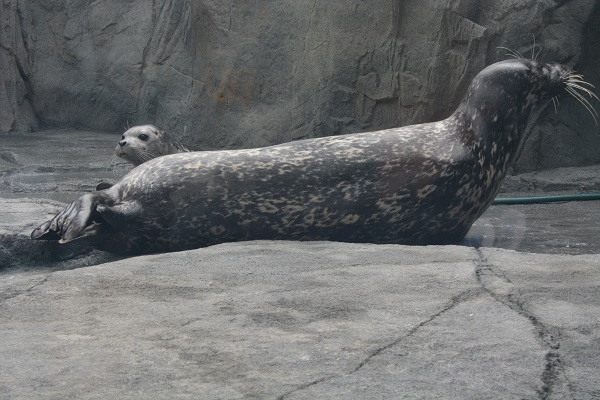by Noella Noelophile®
How can you tell if an octopus is male or female?
How many fish can a puffin carry in its beak at one time?
And, why do some sea stars have six or seven arms?
Long Beach’s Aquarium of the Pacific can answer all of these questions–and quite a few more–as they start virtual tours, this Saturday, December 19th.
These will be the first virtual tours the Aquarium has offered since the start of the coronavirus pandemic.
This weekend’s first virtual tours will be of the Aquarium’s Northern Pacific Gallery. And as Aquarium staff member Stacy mentioned, during a sneak preview on Wednesday, “Anybody in the whole world can actually join in and participate!”
The Northern Pacific Gallery tour will be available to book this Saturday, December 19th and it runs at 1:30 pm. Thereafter, the tour will be running weekly. You can book it at this link, or by calling the Aquarium at (562) 590-3100.
And currently in development is a second virtual tour, of the Aquarium’s Tropical Pacific Gallery.
Thursday started with a “sneak peek” and an appearance by one of the Aquarium’s “animal ambassadors”: Sula.
Sula is a red-footed booby, from tropical areas including the Galapagos Islands and Hawaii. Stacy says you’ll get to see Sula, virtually, sometime within the next several weeks, once the Tropical Pacific virtual tour is complete.
Off to the North
Meanwhile, off we went–virtually.
Our first “stop” offered a look at the Northern Pacific Gallery’s diving birds.
“In this exhibit here, we feature two different types of puffins,” Stacy said. “We also have crested aquas…and then we have pigeon guillemots.”
The puffins, she told visitors, would build nests for their young in holes in the rocky cliffs. But getting food, meant diving into the ocean. The puffins’ giant broad beaks have a surprising capacity.
“How many fish do you think that puffin can catch, at once?” Stacy asked the visitors.
Ten, she continued, was the average. A puffin actually “pins” a caught fish to the top of its beak with its tongue, while going after the next one.
But the most fish a puffin has ever been recorded as capturing at once? That record, Stacy said, was 62!
Drifters and stars
The tour continued with a look at the sea jellies, and the Aquarium’s Coastal Corner.
“These plankton, you may not have realized, are actually plankton, because they’re big,” Stacy continued, referring to the sea jellies.
“…These jellies here are considered plankton, and that’s because they’re drifters….Anything in the ocean that can’t really swim against a current very well.”
Among the facts Stacy shared about the jellies? They’re very fragile.
“It’s hard to imagine, but if a bubble got caught underneath their bell, it could potentially tear a hole through that,” Stacy said.
Next on the tour was the Aquarium’s Coastal Corner, which represents a tide pool, is inhabited by sea stars and sea anemones.
The blue sea star was especially striking–and more so when Stacy explained that it was a type of sea star that comes in a variety of colors.
“That one has seven arms,” she said, “because sea stars have an amazing ability to regenerate. If they lose an arm, they can actually grow it back.”
And sometimes, they grow back more than one–as was the case here!
There was also a pink sea star, which lost an arm but didn’t regenerate it–which sometimes happens, Stacy said. Since the animals at the Aquarium get fed all the time, it doesn’t have to go out to search for its own food. So it doesn’t need to regrow the arm!
Meet “Groot”
The virtual tour had already been a lot of fun. But the next animal was my personal favorite.
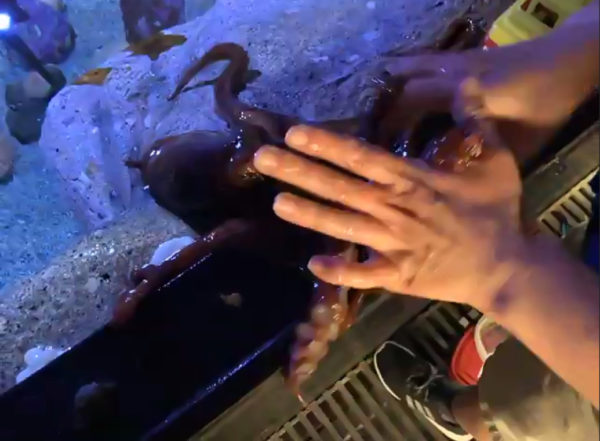 This is “Groot”. He’s a giant Pacific Octopus.
This is “Groot”. He’s a giant Pacific Octopus.
Northern Pacific Gallerist Angelina explained that Groot is a very young octopus, so he’s “not very giant right now”.
“He weighs about four pounds,” she said, “but when he’s full-grown, they can get to be up to 110 pounds.”
“He can actually taste with those suction cups,” she said.
And Groot came over to sample the prawns Angelina had brought.
Angelina told the guests how to tell the difference between a male octopus and a female.
“The third arm on the right,” she explained, “The tip, the bottom centimeter doesn’t have any suction cups on it. If it was a girl, they would have suction cups all the way down every arm.”
Groot put on a show for the visitors.
“He is sticking to me,” Angelina said. “It doesn’t hurt, it doesn’t hurt him when I unstick myself…but sometimes it sounds like bubble wrap where he’s unsticking.”
An octopus, she continued, has a beak, like a bird, in the center of all eight arms.
Groot, she said, was very smart. To keep octopus engaged, the staff give them different kinds of puzzles, such as jars to open.
“He figured out how to open a jar faster than any octopus that I’ve worked with. He opened it in less than…twenty seconds.”
And you thought your pets could shed…
Next, mammologist Katie Finch took the group behind the scenes, virtually, to look at one of the sea otters.
COVID-19, Katie said, had led to one of the biggest changes Aquarium staff have had to make in their protocols.
Sea otters, she explained, are in the same family as mink and ferrets. which are susceptible to coronavirus. Consequently, staff are taking extra precautions with the sea otter habitat. These include limiting the number of people who work with the sea otters, and preparing food separately from the meals for other Aquarium animals.
Guests then met “Ollie”, who came up to be fed shrimp and clams.
Katie explained that Ollie was a rescued sea otter. After being found on the Central California coast as an abandoned pup, she was rehabilitated through the Monterey Bay Aquarium’s surrogacy program.
“Sea otters eat about 25 percent of their body weight, every single day,” Katie said.
And if Ollie looks soft and furry–well, she is.
“(Otters) have about the densest fur of any mammal,”Katie said. “They have about a million hairs per square inch.”
That can make for some intense habitat cleaning.
“Sea otters really have to work hard to maintain their coats, so they’re constantly grooming,” Katie continued.
“…They are often shedding a lot of that fur. So one of the first things we do, when we come in in the morning, is, we hose down the decks, and we clean the habitat…a lot of time that means hosing away a lot of that fur.”
Sea Curiosities
The virtual tour concluded with a look at some unique coldwater animals, in a thriving, biodiverse habitat.
“See how many different kinds of fish you can find on your screen right now,” Stacy directed.
The diamond-shaped fish in this sandy bottom habitat, she said, is a flatfish.
And these cotton-candy-like pink plumes? They’re called sea pens. But they’re not individual animals–they’re actually whole colonies. They’re related to sea anemonies and coral.
“These sea pens have many, many tiny animals that live together to create that sea pen that you’re seeing there,” Stacy explained.
Now, did you ever see a fish standing on a rock–or stuck to a window?
“They’re called Pacific Spiny Lumpsuckers,” Stacy said. “These little ones are not swimming. In fact, they’re sticking.”
Pacific Spiny Lumpsuckers, she explained, have modified fins on the bottom of their bodies, that they use to stick to a surface!
New and virtual
The day’s Northern Pacific Gallery virtual tour preview had been fantastic. Now, you get to see it, this weekend or at a future date you’d like to book. Again, here’s the link for information.
Meanwhile, the Aquarium has just announced some new virtual programs, just in time for Christmas!
One highly imaginative one will allow you to have a sea lion, otter or penguin make a thirty-minute “guest appearance” at your next conference, business meeting or virtual family get-together.
That’s the Aquarium’s new Zoom Animal Appearance program, available now for daily bookings. Stacy explained that the animals’ caregivers will be available to answer questions and engage with attendees during this private appearance. (I’m personally thinking, what a great way to add fun to a virtual Christmas party!)
In addition, Stacy said, the Aquarium’s newest program is their “Virtual Animal Encounters”.
This new program allows guests to get a peek at a training session with either the Aquarium’s sea otters or their seals and sea lions, and ask questions of their trainers. The best way to get information about these two new programs is through the Aquarium’s website, or by calling (562) 590-3100.
And one of the first things anyone said, as Thursday’s virtual tour preview began?
“It’s been a tough year with the Aquarium, and we appreciate our community’s support.”
Be safe, be well, and please consider supporting them if you can, as we all get through this together.

